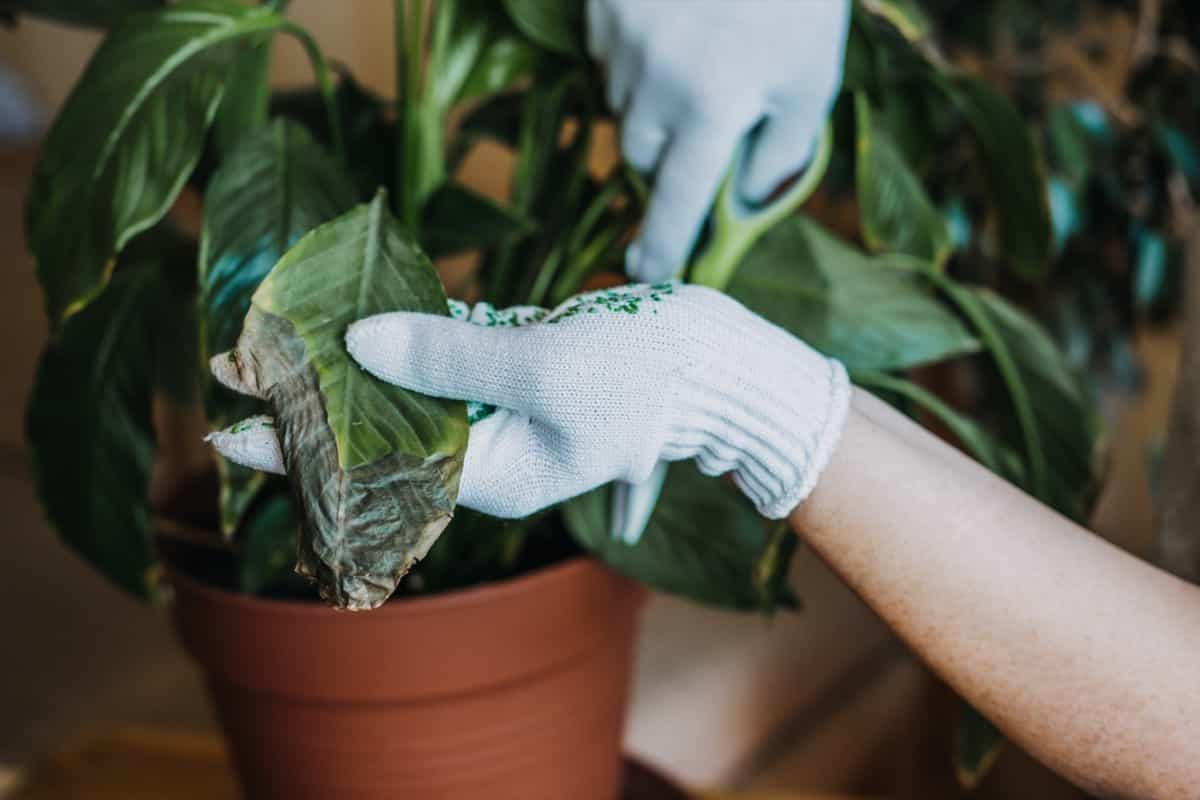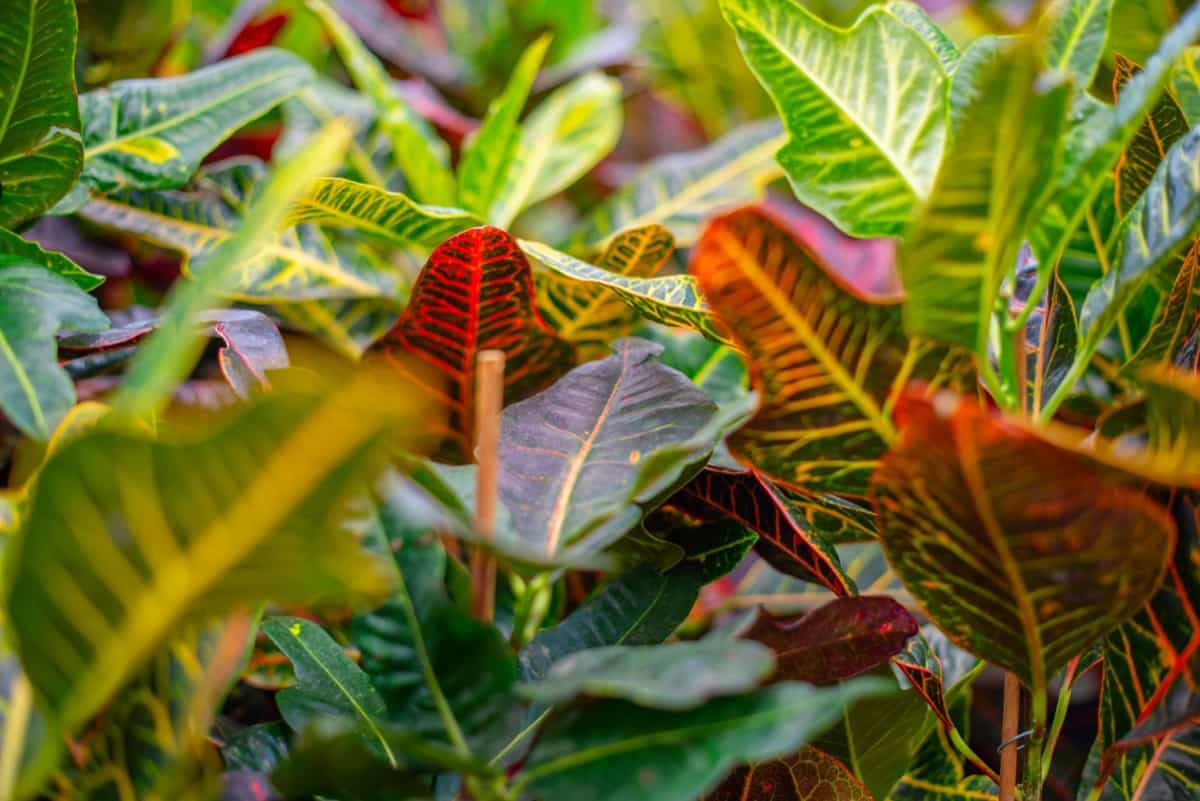Welcome to our blog on Common Croton plant diseases and control! This article will explore the causal organisms, damage symptoms, spread, treatment options, prevention strategies, and management techniques for these diseases. Join our team in exploring different strategies to protect your Croton plants and ensure good yields. Now it’s time to begin.

Major and Common Damaging Croton Diseases
Croton is a perennial flowering evergreen plant in the Euphorbiaceae family, native to tropical regions worldwide. It encompasses diverse flowering plants known for their vibrant foliage, striking colors, unique leaf shapes, and ornamental appeal. With over 1,000 known species, Croton plants exhibit various scientific characteristics, including growth habits, leaf patterns, and sizes. They are popular indoor and outdoor landscaping choices, adding a touch of tropical beauty to gardens, landscapes, and interior spaces, providing a lively and dramatic atmosphere wherever they are cultivated.
| Diseases | Characteristic Symptoms |
| Bacterial Leaf Spot | Water-soaked lesions with yellow halos, wilting, & dieback. |
| Rust | Raised orange, yellow, or brown pustules or blisters, & dieback. |
| Botrytis Blight | Gray fuzzy fungal growth, flower rot, & musty or rotten smell. |
| Anthracnose | Sunken lesions, concentric margins, & pinkish or orange spore mass. |
| Powdery Mildew | Gray powdery fungal growth, chlorosis, & premature leaf drop. |
| Fusarium Wilt | Yellowing and wilting of leaves, vein & vascular discoloration. |
| Leaf Blight | Black lesions, concentric rings, target-like appearance, & withering. |
| Cercospora Leaf Spot | Black spots surrounded by yellow halos & water-soaked appearance. |
| Downy Mildew | Grayish-purple fungus, angular lesions, & water-soaked appearance. |
| Root Rot | Yellowing and wilting of foliage, Soft & decayed lesions, & foul odor. |
How to Identify and Treat Croton Diseases
Bacterial Leaf Spot Disease Control in Croton
- Causal Organism: Xanthomonas campestris pv. codiaei.
- Symptoms: The characteristic symptom is the water-soaked lesions on leaves which may turn dark brown or black, surrounded by a yellow halo. Lesions may coalesce, leading to large necrotic areas. Infected plants show wilting, curling, dieback, and reduced plant vigor.
- Spread: The bacteria spread via contaminated water, rain, irrigation, and infected plant debris, insects, or tools.
- Treatment: Spray copper hydroxide or copper sulfate. Practice sanitation by removing and destroying infected leaves. Avoid overhead watering to minimize leaf wetness. Disinfect pruning tools regularly to prevent disease spread.
Rust Disease Control in Croton
- Causal Organism: Puccinia spp.
- Symptoms: The characteristic symptom is the formation of small, raised pustules or blisters on leaves. Pustules may be orange, yellow, or brown. Infected plants show leaf yellowing, chlorosis, withering, extensive defoliation, water-soaked appearance, and dieback.
- Spread: The urediniospores are airborne and can be transported over long distances by wind, insects, or human activity.
- Treatment: Spray azoxystrobin or myclobutanil. Remove and destroy infected leaves to reduce spore production. Improve air circulation and reduce humidity.
Botrytis Blight Disease Control in Croton
- Causal Organism: Botrytis cinerea.
- Symptoms: The characteristic symptom is brown or gray fuzzy fungal growth on leaves, stems, and flowers. Infected plant parts show a collapse or water-soaked appearance, browning and rotting of flowers, and emit a musty or rotten smell.
- Spread: The spores are airborne and spread via wind, insects, or infected plant material in high-humidity environments.
- Treatment: Spray thiophanate-methyl, azoxystrobin, or iprodione. Ensure proper spacing and good airflow between plants. Remove and discard infected plant parts. Avoid overhead watering and excess humidity.
Anthracnose Disease Control in Croton
- Causal Organism: Colletotrichum gloeosporioides.
- Symptoms: The characteristic symptom is the formation of dark, sunken lesions on leaves, stems, and fruits surrounded by defined concentric margins. Lesions may produce pinkish or orange spore masses under moist conditions. Infected plants show distortion, defoliation, and necrosis.
- Spread: Spores disperse via wind, rain, or irrigation water and insects, infected tools, or equipment.
- Treatment: Apply chlorothalonil, azoxystrobin, thiophanate-methyl, copper hydroxide, copper sulfate, or mancozeb. Practice spacing and maintain good airflow. Monitor the plants regularly, and avoid overhead irrigation or waterlogging.
Powdery Mildew Disease Control in Croton
- Causal Organism: Oidium spp.
- Symptoms: The primary symptom is the formation of white or gray powdery fungal growth on the upper surface of leaves. Infected plants show leaf yellowing, curling, distortion, and premature leaf drop.
- Spread: Fungal spores are airborne and spread via wind in areas with high humidity, crowded plantings, or poor air circulation.
- Treatment and Management: Spray wettable sulfur, neem oil, or potassium bicarbonate. Prune or remove infected plant parts and dispose of them properly. Monitor the plants regularly, provide adequate spacing, and improve air circulation by avoiding overcrowding.
In case you missed it: How to Identify and Treat Croton Pests: Symptoms, Prevention, and Control

Fusarium Wilt Disease Control in Croton
- Causal Organism: Fusarium oxysporum.
- Symptoms: The prominent symptom is the yellowing and wilting of leaves on one side of the plant. Infected plants show dark discoloration of vascular tissues, browning or necrosis of leaf veins, and the plant may eventually die, with the outer branches dying first.
- Spread: The fungi are soil-borne and spread via contaminated soil or infected plant material, water, tools, or insects that feed on infected plants.
- Treatment and Management: Spray benomyl, propiconazole, tebuconazole, or thiophanate-methyl. Practice crop rotation to reduce pathogen build-up in the soil. Remove and destroy infected plants to stop further disease spread.
Leaf Blight Disease Control in Croton
- Causal Organism: Alternaria spp.
- Symptoms: The primary symptom is the formation of irregularly shaped brown or black lesions on leaves. Lesions may have a target-like appearance with concentric rings. Infected plants show leaf distortion, withering, and defoliation.
- Spread: Fungal spores are spread via wind, splashing water, insects, tools, or human activity.
- Treatment and Management: Spray chlorothalonil, azoxystrobin, thiophanate-methyl, or iprodione. Remove and destroy infected plant debris promptly. Improve air circulation and avoid overcrowding.
Cercospora Leaf Spot Disease Control in Croton
- Causal Organism: Cercospora codiaeicola.
- Symptoms: The characteristic symptom is the development of circular to irregularly shaped spots on leaves. Spots may be tan, brown, or black, surrounded by yellow halos. Infested leaves show chlorosis, water-soaked appearance, and premature leaf drop.
- Spread: Fungal spores are dispersed via wind, splashing water, rain, or irrigation.
- Treatment and Management: Spray copper hydroxide, copper sulfate, bordeaux mixture, mancozeb, dithane m-45, or chlorothalonil. Prune and destroy infected leaves to reduce the source of inoculum. Avoid overhead watering to minimize leaf wetness. Provide adequate spacing to improve air circulation.
Downy Mildew Disease Control in Croton
- Causal Organism: Peronospora spp.
- Symptoms: The primary symptom is the formation of grayish-purple fungal growth on the undersides of leaves. Infected plants show angular lesions, a water-soaked appearance, leaf drop, and chlorosis.
- Spread: The airborne spores spread via overhead irrigation, rain, or wind.
- Treatment and Management: Spray copper hydroxide, copper sulfate, or fosetyl-aluminum. Provide good air circulation and avoid overcrowding. Water plants at the base to minimize leaf wetness.
Root Rot Disease Control in Croton
- Causal Organism: Phytophthora parasitica.
- Symptoms: The most prominent symptom is the wilting and yellowing of foliage, starting from the lower leaves, and brown or black lesions on roots, which may become soft and decayed. Infected plants show foul odor, stunted growth, and reduced vigor. Plants may easily detach from the soil in severe cases due to a weakened root system.
- Spread: Pathogens are soil-borne and primarily spread via contaminated soil or water due to overwatering, poor drainage, and infected tools or pots.
- Treatment and Management: Drench the soil with mefenoxam, captan, metalaxyl, or fosetyl-aluminum. Provide well-draining soil and avoid overwatering. Ensure proper plant spacing to allow for good air circulation. Avoid using contaminated tools or pots.
In case you missed it: How to Identify and Treat Nerium Diseases: Damage Symptoms, Prevention, and Control

Conclusion
Some major diseases affecting Croton plants include bacterial leaf spot, rust, botrytis blight, anthracnose, powdery mildew, fusarium wilt, leaf blight, cercospora leaf spot, downy mildew, and root rot disease. Various organisms cause these diseases and exhibit specific symptoms, modes of spread, and management approaches.
- Deworming Schedule for Dogs/Puppies: A Beginners Guide
- How to Prevent and Control Parasites in Goats
- Beneficial Insects in Pest Management
- Natural Solutions for Pest Control in Flower Gardens
- Types of Fungicides Used in Agriculture
- Common Issues in the Fruit Development Stage of Pomegranate Farming
- Fruit Development Issues in Papaya: Easy Solutions and Treatment
- Soil-Borne Diseases and How to Protect Your Plants
- Practices to Prevent Disease Spread in the Garden